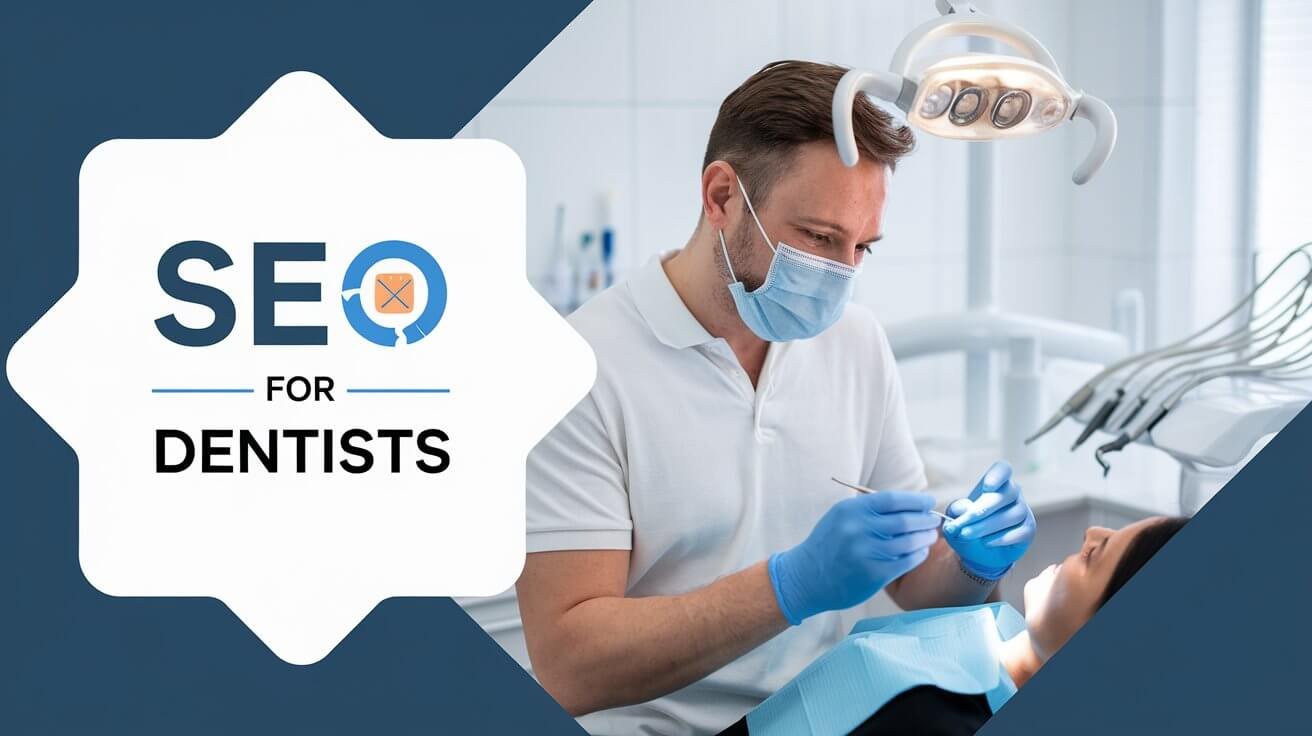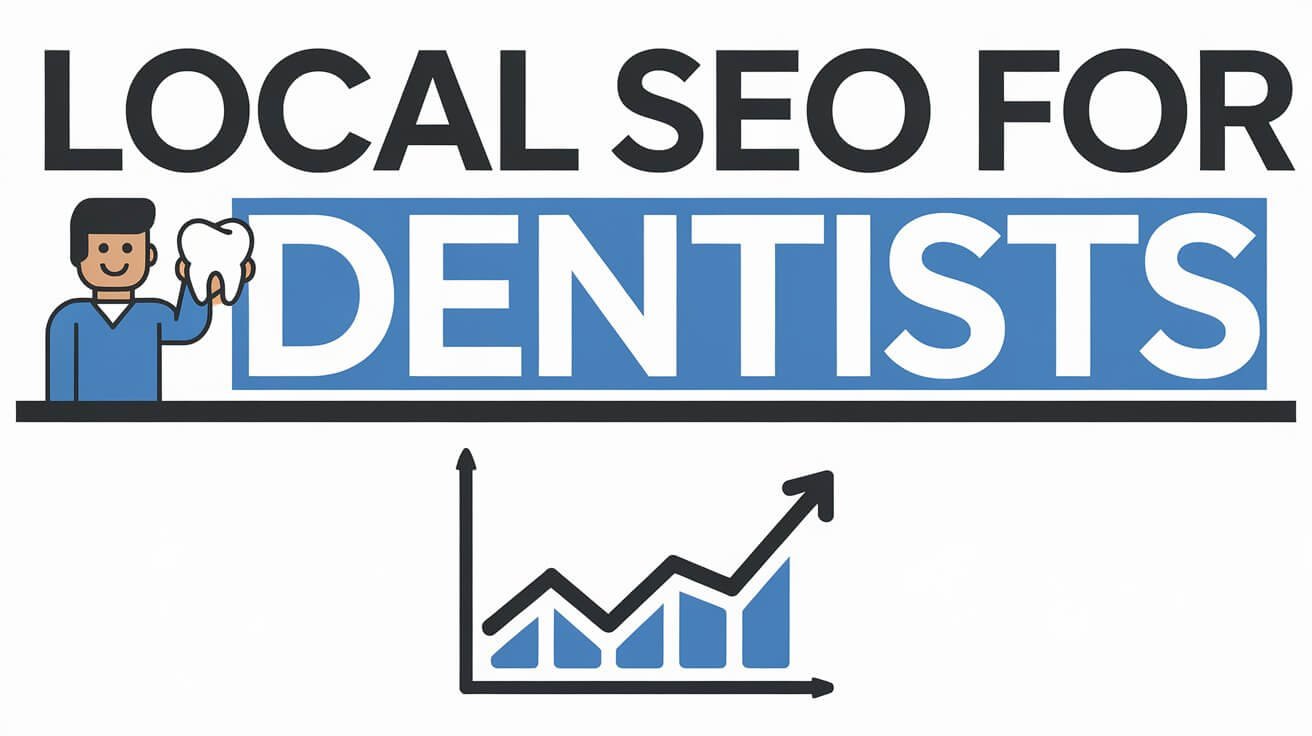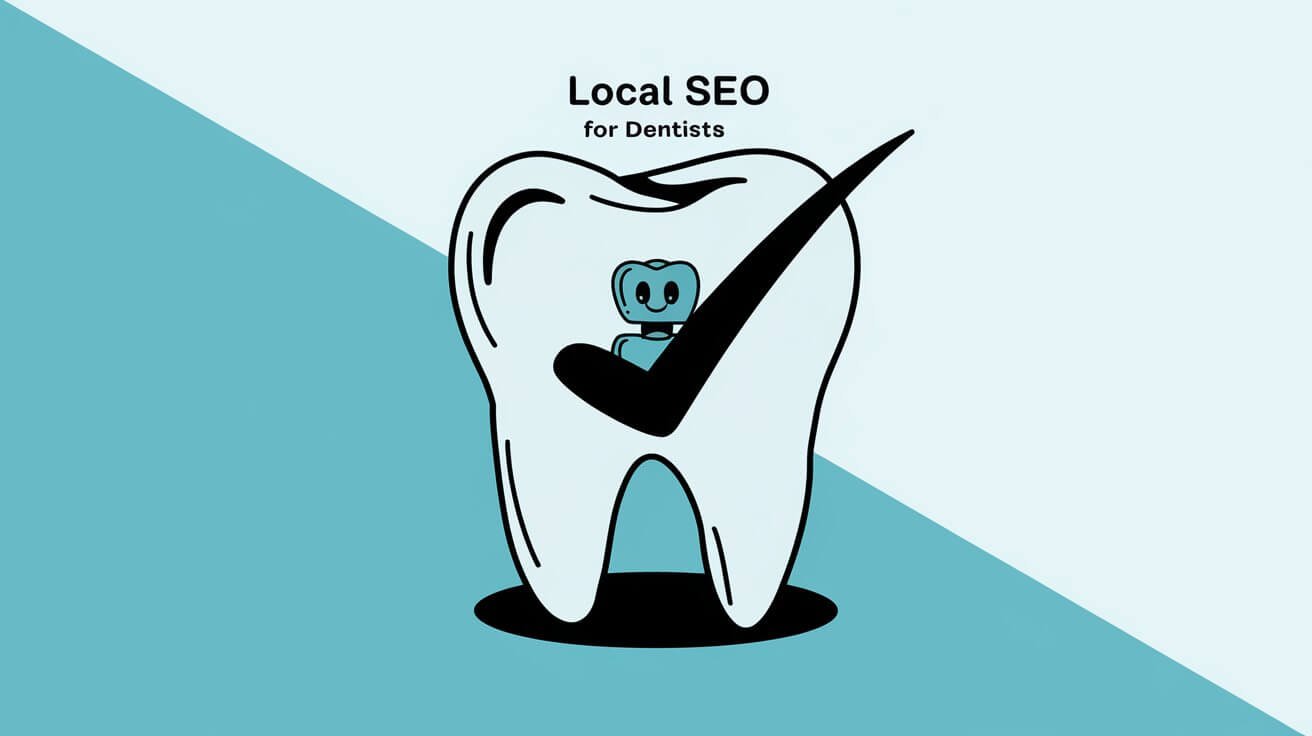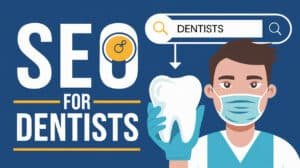In today’s digital age, people search for healthcare services online, including dental care. For dentists, having a strong online presence is crucial for attracting local patients. Local SEO for dentists is the strategy that ensures your practice appears at the top of local search results when potential patients are looking for dental services near them.
This guide will cover the essentials of local SEO for dentists, the benefits it offers, and actionable strategies to help your dental practice rank higher in local search results.
What is Local SEO for Dentists?
Local SEO for dentists involves optimizing your online presence to attract local patients searching for dental services in your area. The goal is to rank your practice higher in local search results, particularly in Google’s “Map Pack” (the top three listings that appear in map-based search results). By implementing a targeted local SEO strategy, you can increase visibility, drive more traffic to your website, and bring more patients through your door.
Benefits of Local SEO for Dentists
- Attract Local Patients: Most people look for dental services near their location. Ranking high in local search results ensures that your practice is easily found by those looking for a dentist nearby.
- Increased Website Traffic: Local SEO helps your dental website receive more organic traffic, leading to more appointment bookings.
- Cost-Effective Marketing: Compared to traditional advertising methods, local SEO is a cost-effective way to reach potential patients without spending excessively on ads.
- Trust & Credibility: Ranking high in local search results enhances the credibility of your practice, making it more likely for patients to choose you over competitors.

Key Components of Local SEO for Dentists
To succeed in local SEO for dentists, it’s essential to focus on the following elements:
1. Google My Business (GMB) Optimization
Your Google My Business (GMB) profile is one of the most important tools for local SEO. A well-optimized GMB profile helps your practice appear in the local map pack and increases visibility for searches like “dentist near me” or “best dentist in [city].” Here’s how to optimize it:
- Claim Your GMB Listing: If you haven’t already, claim and verify your Google My Business listing. This gives you control over the information displayed about your practice.
- Complete Your Profile: Fill out all the details in your GMB profile, including:
- Practice name
- Address
- Phone number (NAP – Name, Address, Phone number should be consistent everywhere)
- Business hours
- Appointment booking link
- Practice specialties (e.g., cosmetic dentistry, orthodontics)
- Add High-Quality Photos: Upload professional images of your dental office, team, and services to make your profile more attractive to potential patients.
- Categories and Attributes: Choose the most relevant category for your practice, such as “dentist” or “dental clinic.” You can also add attributes like “accepts insurance” or “wheelchair accessible.”
- Encourage Reviews: Ask satisfied patients to leave reviews on your GMB listing. Positive reviews are crucial for building trust and improving your local rankings.

2. Local Keyword Research
Keyword research is fundamental to any SEO strategy, including local SEO for dentists. Identify the terms potential patients are using when searching for dental services in your area. Local keywords typically include the name of the service and the location, such as:
- “Dentist near me”
- “Family dentist in [city]”
- “Emergency dental care in [city]”
- “Pediatric dentist [city]”
- “Cosmetic dentistry [city]”
Use these local keywords throughout your website content, meta descriptions, page titles, and blog posts to improve your chances of ranking for local searches.
3. On-Page SEO for Local Searches
On-page SEO involves optimizing individual pages on your website for local keywords and improving the user experience. Here’s how to optimize your website for local searches:
- Optimize Page Titles and Meta Descriptions: Include your main local keyword (e.g., “Best Dentist in [City]”) in the title tags and meta descriptions of your website pages.
- Create Location-Specific Pages: If your dental practice serves multiple locations, create dedicated pages for each area. For example, you can have pages like “Cosmetic Dentistry in [City]” or “Emergency Dentist in [City].”
- Use Structured Data (Schema Markup): Implement local business schema markup to provide search engines with information about your business. This can help your website appear in rich results, such as maps and reviews.
- NAP Consistency: Ensure that your Name, Address, and Phone Number (NAP) are consistent across your website, GMB, and all other online listings.
4. Local Citations and Directories
Local citations are online mentions of your practice’s NAP information. These citations help build authority and improve your practice’s visibility in local search results. Some popular citation sites for dentists include:
- Yelp
- Healthgrades
- Zocdoc
- 1-800-Dentist
- Yellow Pages
Make sure your business details are consistent across all these directories to avoid confusion and maintain a strong local SEO presence.

5. Online Reviews and Reputation Management
Online reviews play a significant role in local SEO for dentists. Google and other search engines prioritize businesses with positive reviews because they signal trustworthiness and high-quality service.
- Encourage Patient Reviews: Politely ask patients to leave reviews on your GMB profile, Yelp, or Healthgrades. You can also send follow-up emails with a link to your review page.
- Respond to Reviews: Engage with patients by responding to both positive and negative reviews. A simple “Thank you for your kind words!” can go a long way, while addressing negative feedback professionally shows your commitment to excellent customer service.
- Embed Reviews on Your Website: Showcasing positive reviews on your website can build credibility and encourage new patients to book appointments.
6. Mobile Optimization
With the increasing number of searches happening on mobile devices, it’s essential that your dental practice website is fully optimized for mobile users. A mobile-friendly site is crucial for both SEO and user experience:
- Responsive Design: Ensure your website adjusts seamlessly to different screen sizes, providing a smooth browsing experience on smartphones and tablets.
- Fast Loading Times: A slow website can hurt both user experience and SEO. Optimize images, use compressed files, and ensure your site loads quickly.
- Click-to-Call Buttons: Make it easy for mobile users to contact your practice by including click-to-call buttons on your website.

7. Local Link Building
Earning high-quality backlinks from reputable local websites is a key ranking factor for local SEO. Some strategies for local link building include:
- Partner with Local Businesses: Collaborate with nearby businesses and exchange backlinks. For example, you can link to a local orthodontist or pediatrician.
- Sponsor Local Events: Sponsoring or participating in local events (e.g., health fairs, community clean-ups) can get your practice featured on local event pages, which often link back to your website.
- Write Guest Posts: Offer to write guest posts for local health blogs or publications, focusing on dental health topics and linking back to your website.

8. Create Location-Based Content
Creating relevant, location-specific content can help you rank for local searches. Use your blog to publish posts that target local keywords and answer common questions that potential patients may have, such as:
- “What to Expect from a Dental Cleaning in [City]”
- “How to Choose a Family Dentist in [City]”
- “Emergency Dental Care in [City]: What You Need to Know”
Location-based content not only improves your rankings but also positions your practice as a trusted resource for dental care in your community.

9. Social Media and Local Engagement
Social media plays a role in local SEO by increasing brand awareness and engagement within your community. Use platforms like Facebook, Instagram, and Twitter to:
- Share updates about your practice, services, and promotions.
- Post patient testimonials (with permission).
- Engage with local followers and answer their questions.
- Encourage check-ins when patients visit your practice.
By building a strong local following, you increase your chances of attracting more local patients to your practice.
Conclusion
Implementing a robust local SEO for dentists strategy is essential to growing your practice and attracting more local patients. From optimizing your Google My Business profile to building local citations and encouraging patient reviews, the right local SEO tactics can significantly improve your visibility in search results. By focusing on these strategies, your dental practice will stand out online, bringing more patients through your doors.
To ensure the best results, consider working with a local SEO expert who understands the specific needs of dental practices. With a well-executed local SEO strategy, your dental practice can grow and thrive in today’s competitive digital landscape.





